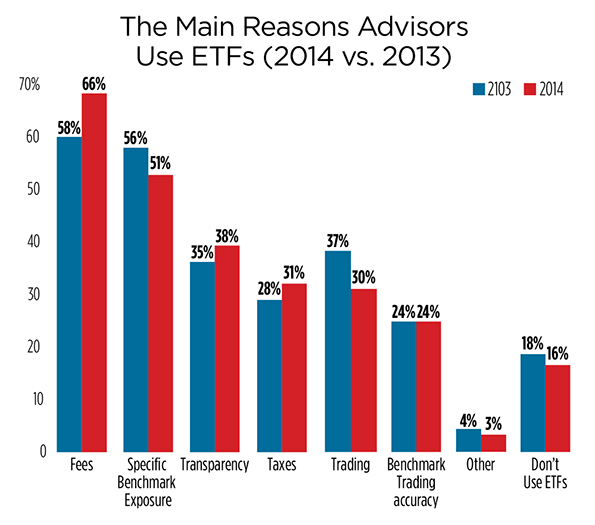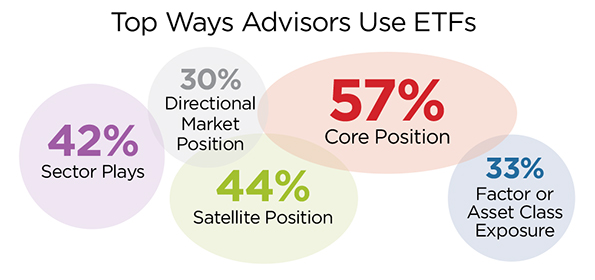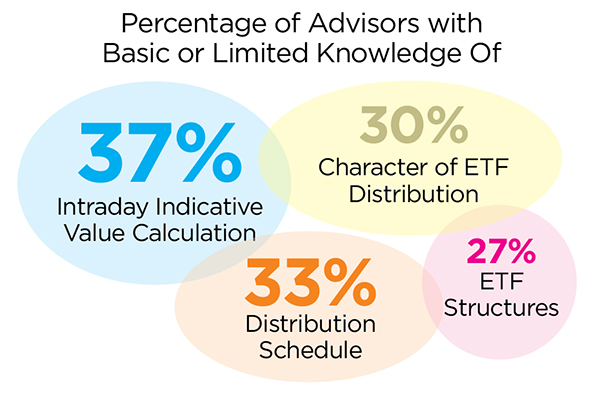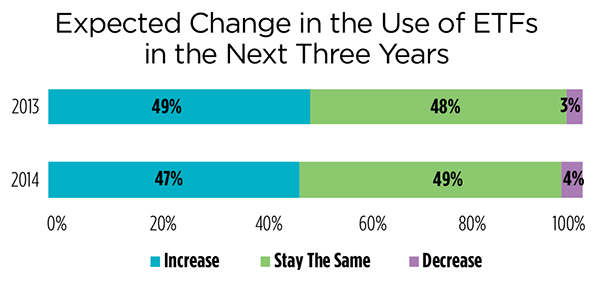ETF Usage on the Rise
As exchange traded funds continue to take more market share, the number of advisors using the structure increased to 84 percent in 2014, up from 82 percent in 2013, according to the 2014 AdvisorBenchmarking RIA Trend Report. When asked why advisors use ETFs, 66 percent said fees, up from 58 percent last year. Getting exposure to a specific benchmark was also a top reason, with 51 percent of respondents, but it was down from 56 percent last year. Transparency and taxes were also more important reasons this year.

The Role of ETFs
While 57 percent of advisors use ETFs as core portfolio positions, there are still a wide variety of other ways in which they are being deployed. This year, more advisors are using ETFs as satellite holdings, sector plays, factor or asset class exposure, and thematic investing.

Advisor Aptitude for ETFs
If advisors are going to use ETFs in their clients’ portfolios, it’s important that they be educated on the structure. Basic concepts like liquidity, trading, and investment methodology are well-understood, with at least half of advisors reporting above average or expert knowledge in these areas. Advisors were less knowledgeable, however, about more technical concepts. Many advisors said they had limited or basic knowledge of intraday indicative value calculation (37 percent of respondents) and distribution schedules (33 percent).

How Allocations May Change
While last year’s data clearly demonstrated a continuation in the trend of advisors slowing incremental asset allocation to exchange traded funds, this year’s results indicate more of a leveling off. Nearly half of advisors (47 percent) expect their allocation to ETFs to increase over the next three years, although this is down from 49 percent in 2013. Another half of advisors plan to maintain their current exposure to ETFs, while 4 percent expect to decrease their allocation.



